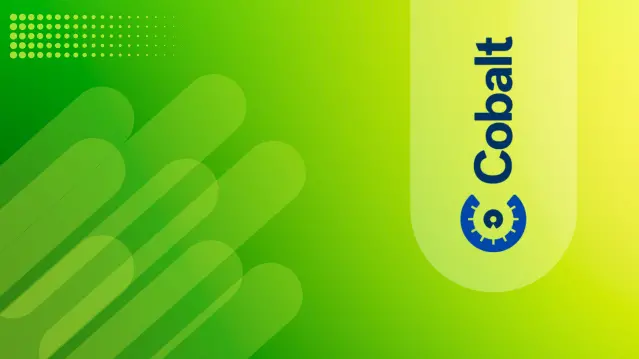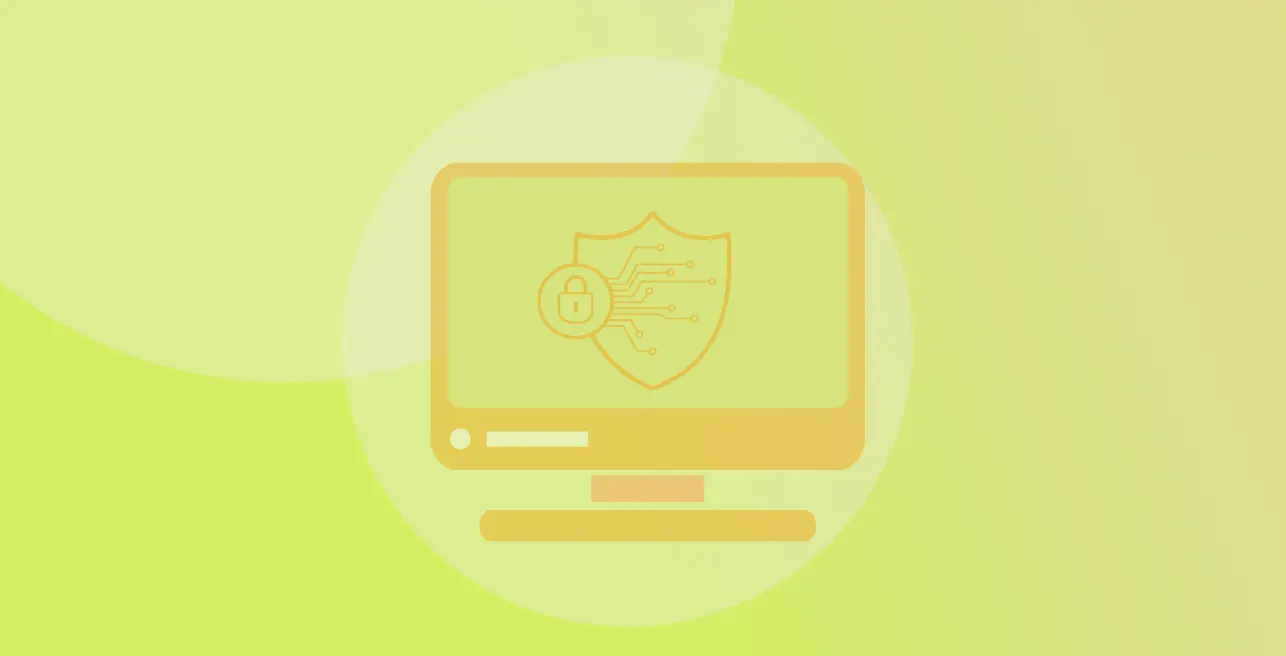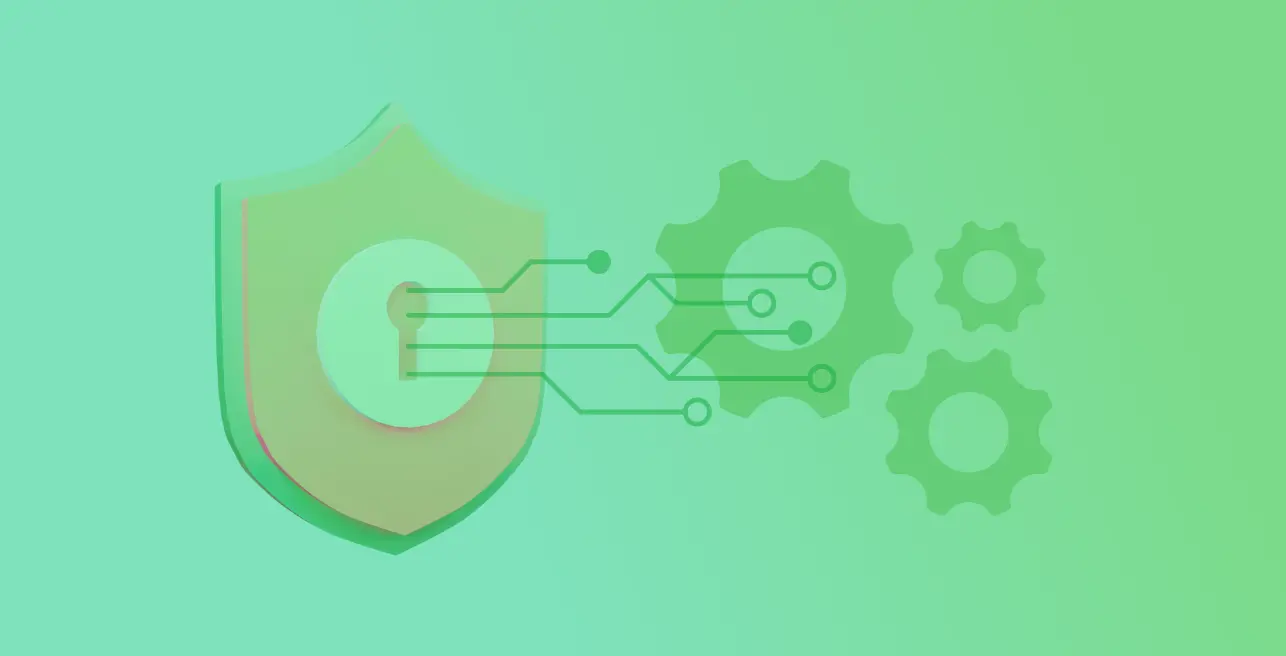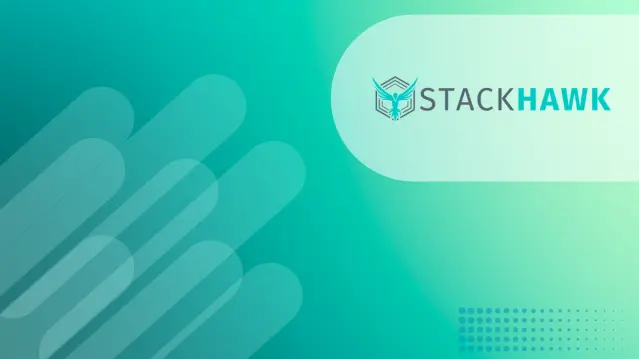
Introduction
Dynamic application security testing (DAST) has become an essential part of securing modern software, especially as organizations adopt API-first development and microservices architectures. Security tools must now integrate directly into developer workflows, supporting continuous deployment without slowing down delivery.
StackHawk entered this market in 2019 with a developer-first approach. Built on top of OWASP ZAP, the platform promised an easier interface, CI/CD integration, and API testing support that traditional tools lacked. In 2025, it continues to position itself as a modern DAST solution for developer teams.
The question for decision makers is whether StackHawk’s pricing delivers enough value in today’s competitive market. This blog will break down StackHawk’s pricing model, highlight its features and limitations, and evaluate how it compares to alternatives like Beagle Security.
StackHawk pricing overview
StackHawk operates on a contributor-based pricing model with annual billing only. Plans are structured around the number of code contributors in a team.
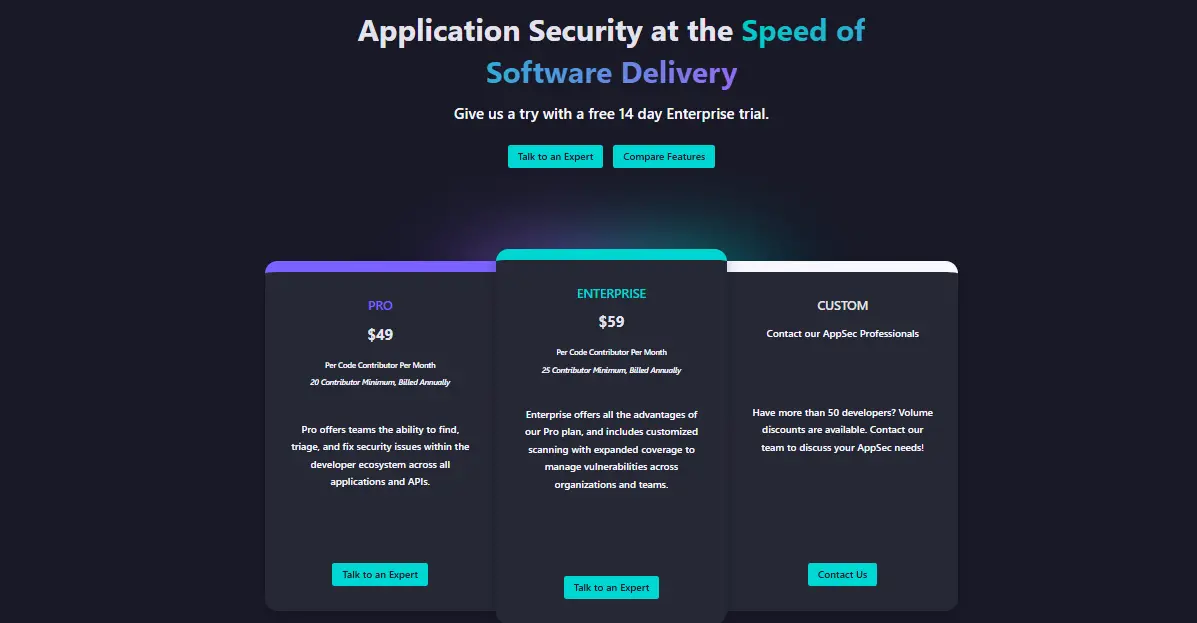
Pro plan : $49 per contributor per month, billed annually (20 contributor minimum)*
Minimum annual cost: $11,760
Unlimited scans, applications, and environments
REST, GraphQL, SOAP, and gRPC API support
CI/CD integrations with major platforms
Developer dashboards for application visibility
Enterprise plan: $59 per contributor per month, billed annually (25 contributor minimum)
Minimum annual cost: $17,700
Includes Pro plan features
Role-based access control and team management
Policy management and executive reporting
Single sign-on and enhanced authentication options
Custom enterprise: Contact sales for tailored pricing
Volume discounts for 50+ contributors
Dedicated support and customer success
Custom integrations and service level agreements
Trial: 14-day free trial of the enterprise plan is available
No free tier: There is no permanent free plan, unlike some developer tools
Pricing considerations
High entry cost: Small teams cannot access StackHawk due to the 20 contributor minimum
Annual-only contracts: No flexibility for monthly billing
Scaling costs: Pricing grows linearly with developer count, not actual usage
Infrastructure overhead: Requires Docker and CI/CD resources for setup
StackHawk key features
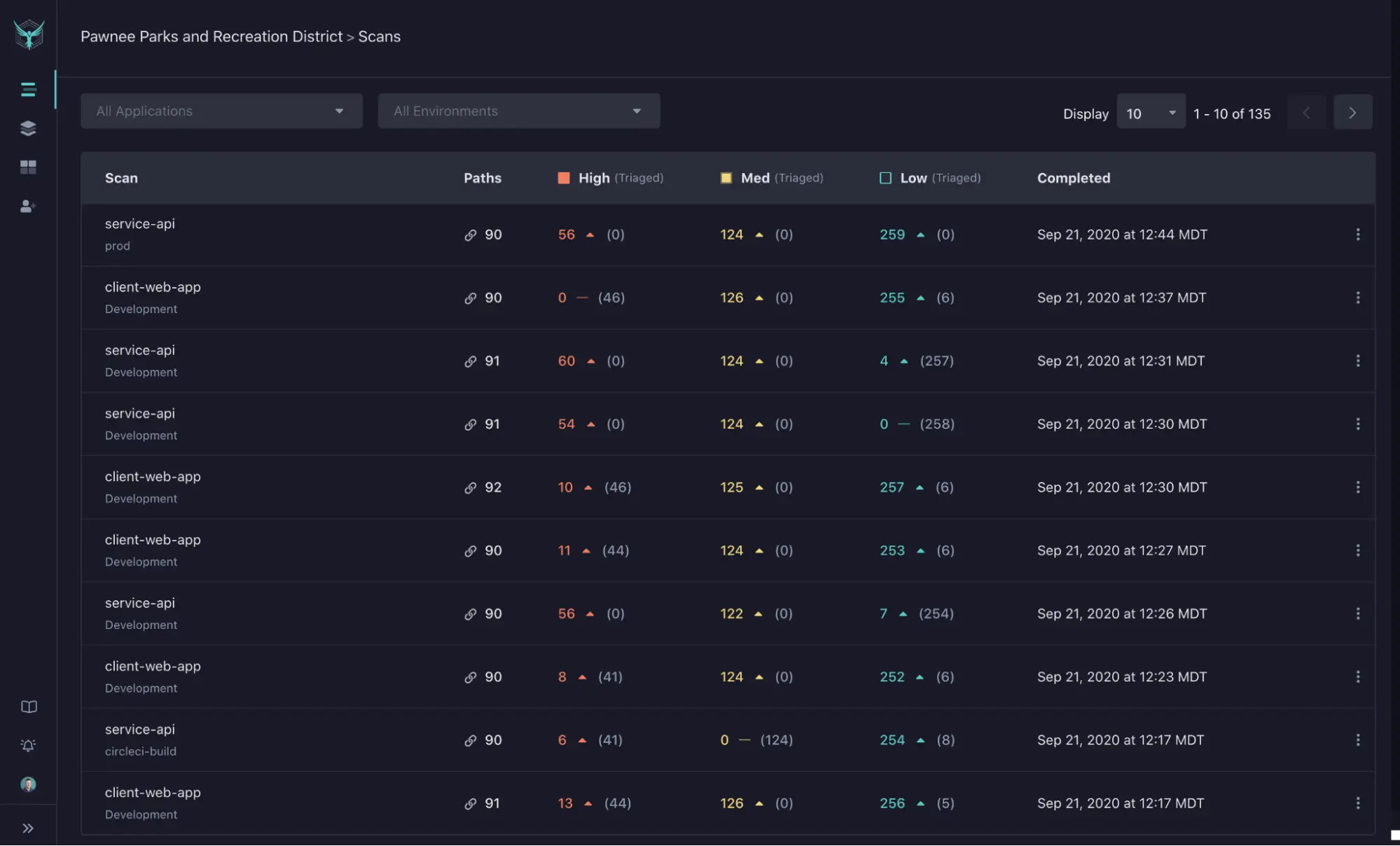
StackHawk is designed for developers building and testing modern applications. Its main features include:
Web app and API scanning: Identifies vulnerabilities in REST, GraphQL, SOAP, and gRPC APIs
SPA and JavaScript testing: Handles single page applications through Ajax crawling
Authentication as code: YAML configurations for OAuth, API keys, and multi-step authentication
CI/CD pipeline integration: Works with GitHub Actions, GitLab, Jenkins, CircleCI, Azure DevOps, and AWS pipelines
Developer-friendly reporting: Technical findings with request and response details plus remediation guidance
Notifications: Slack, Jira, and GitHub pull request alerts for quick feedback
Limitations
Based on ZAP: Inherits false positive issues and traditional scanning limitations
Configuration complexity: YAML-based setup increases developer time investment
No business logic testing: Cannot identify workflow or logic-based vulnerabilities
Pricing exclusions: Small organizations and startups are locked out due to contributor minimums
Best StackHawk alternative: Beagle Security
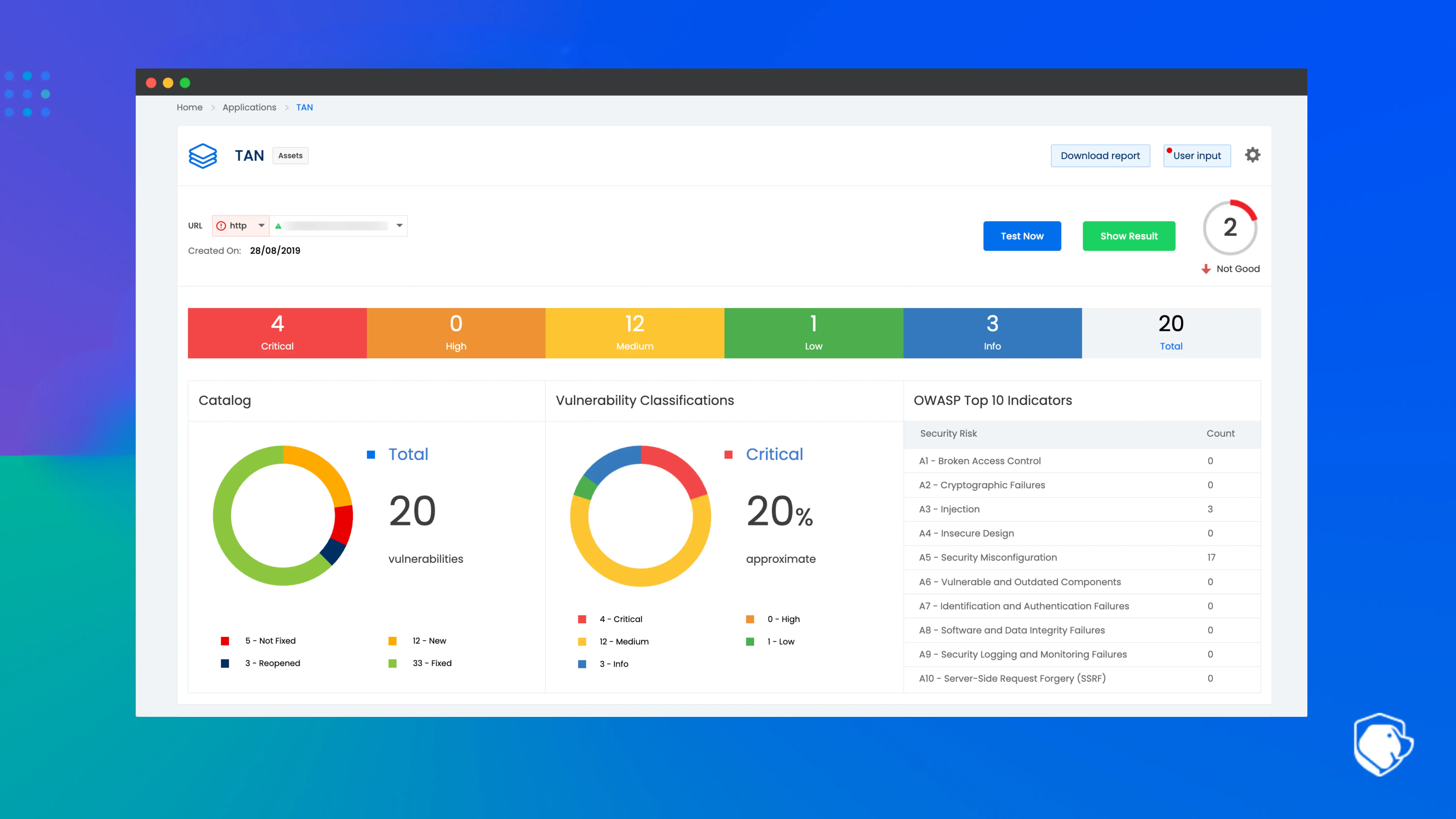
Beagle Security is a modern DAST platform designed with a developer-first approach. It uses AI-powered testing to simulate real-world attacker behavior, helping teams identify vulnerabilities that traditional scanners often miss. With strong API security capabilities and advanced authentication handling, Beagle Security aligns well with the needs of today’s application environments.
Unlike solutions that scale costs by contributor count or impose high entry thresholds, Beagle Security offers transparent usage-based pricing that works for small startups and large enterprises alike. Its zero false positives guarantee and contextual remediation guidance help development teams resolve security issues quickly without unnecessary triage.
Key features of Beagle Security
AI-powered testing that adapts to application logic for real-world accuracy
Zero false positives guarantee through verified exploits and validation
Business logic vulnerability detection beyond standard payload-based scanning
Comprehensive API coverage for REST, GraphQL, and modern API architectures
Advanced authentication support including MFA, SSO, and multi-step login flows
Developer-friendly reporting with contextual remediation guidance
Seamless CI/CD integration across major platforms for automated security checks
Pricing advantage
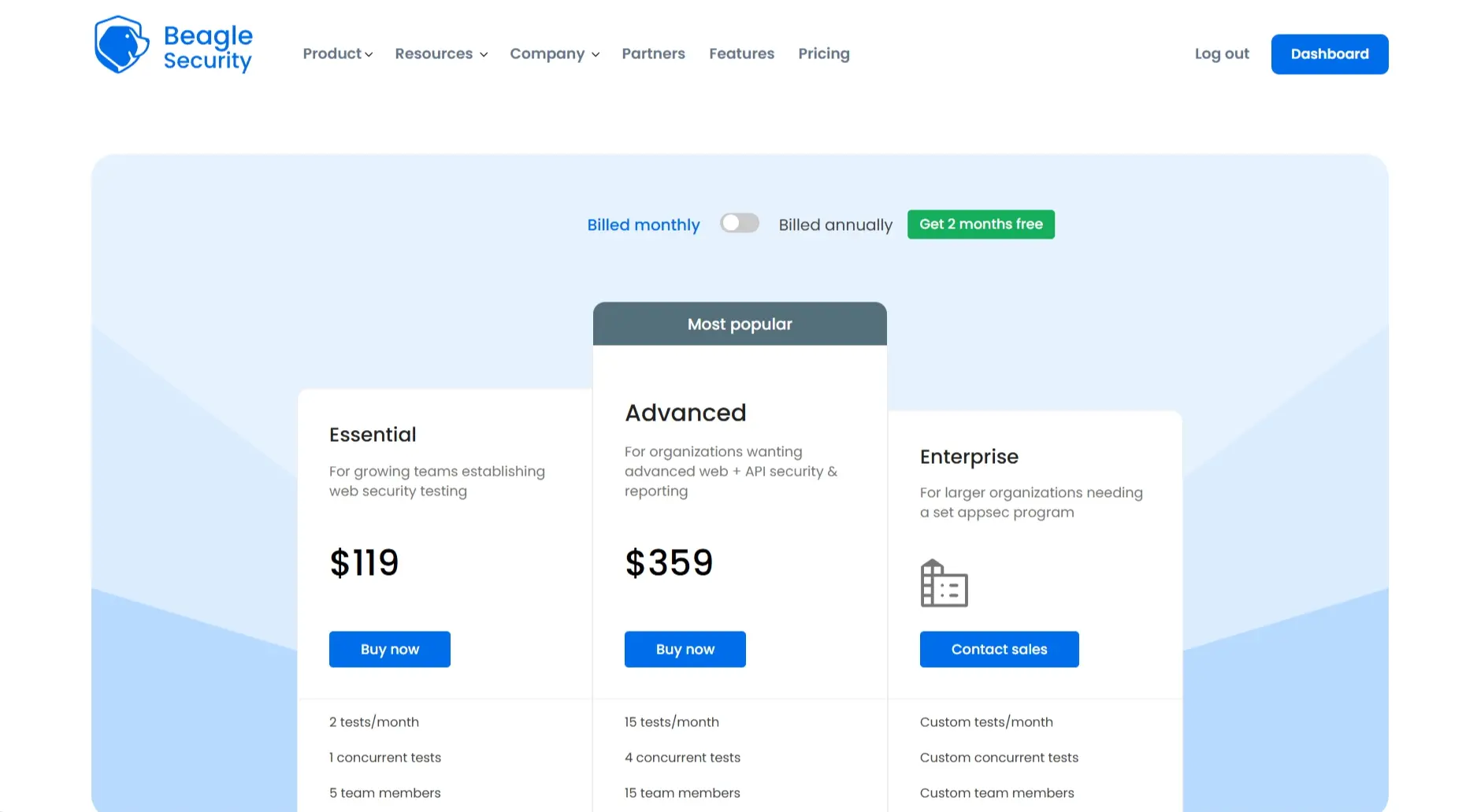
Starts at $119 per month with transparent usage-based pricing
No contributor minimums, making it accessible for small teams
Enterprise plans start at $8,500 per year, scaling predictably with needs
Typically delivers 63 to 71 percent cost savings compared to StackHawk
Reviews and ratings
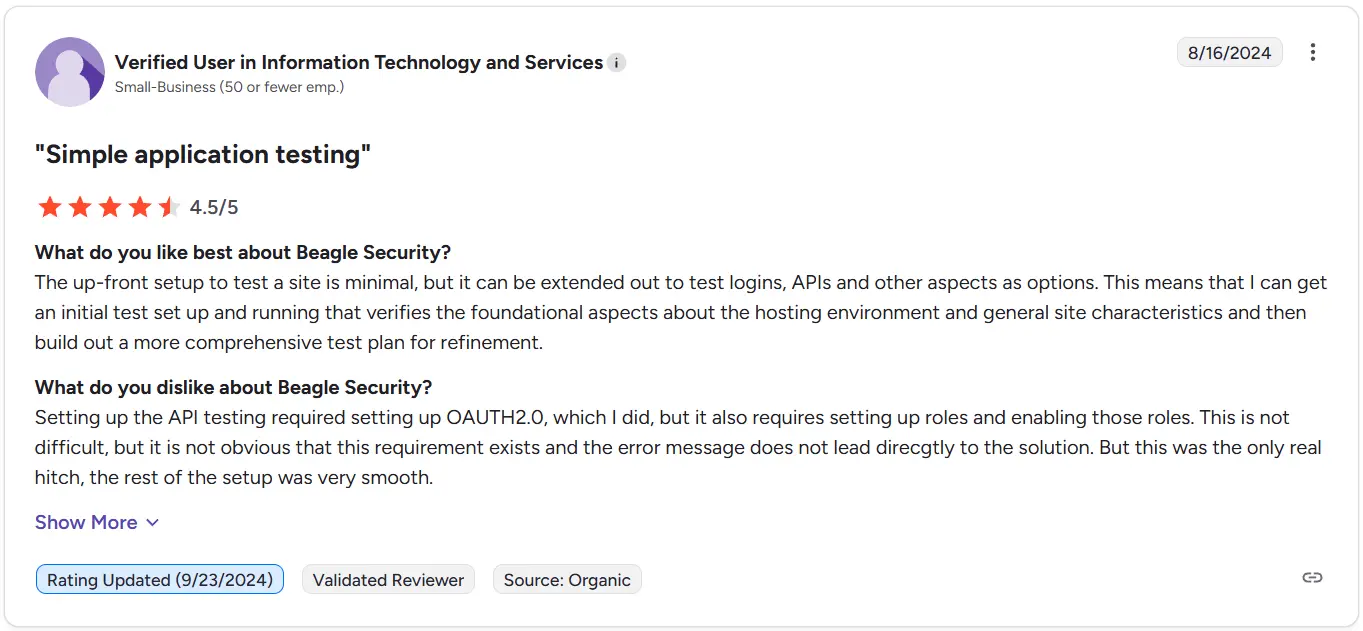
Beagle Security maintains a 4.7 out of 5 rating on G2. Customers highlight its ease of setup, developer-friendly reports, and accuracy. Many note that eliminating false positives saves significant time compared to legacy scanning tools.
Quick comparison: StackHawk vs Beagle Security
| Feature | StackHawk | Beagle Security |
|---|---|---|
| Starting price | $11,760 per year minimum | $119 per month |
| Pricing model | Contributor-based | Usage-based |
| False positives | Moderate, requires triage | Zero false positives |
| Business logic testing | Not supported | Included |
| Authentication | YAML configs, limited flows | Full support for MFA, SSO, multi-step |
| Small team access | Excluded (20 minimum) | Available |
Factors influencing StackHawk pricing
Contributor minimums: 20-25 contributor minimums increase entry cost
Team growth: Pricing scales directly with developer headcount rather than testing volume
Annual-only contracts: Lack of monthly options reduces flexibility
Infrastructure costs: Requires Docker and CI/CD pipeline resources
Developer time: YAML configurations and false positive triage add hidden costs
Enterprise features: Role-based access, SSO, and reporting add further cost at the Enterprise tier
Is StackHawk pricing worth it in 2025?
StackHawk plays an important role in making DAST more accessible to developers. Its strong API coverage, CI/CD integrations, and developer-first philosophy align well with the realities of modern application development. For established DevOps teams with 20 or more contributors and dedicated security resources, StackHawk can be a useful addition.
However, its contributor-based pricing model and reliance on ZAP create barriers. Small teams cannot use it, scaling costs are high for larger organizations, and the inherited false positives mean added overhead for developers and security teams.
Beagle Security offers a more efficient path for most organizations. With AI-powered testing, advanced API and business logic coverage, and transparent pricing starting at $119 per month, it provides broader coverage at a fraction of the cost. Its zero false positives guarantee and developer-friendly design make it better aligned with the needs of modern software teams.
In 2025, StackHawk is a viable option for teams that fit its pricing model and have strong CI/CD maturity, but Beagle Security stands out as the smarter long-term investment for organizations of all sizes.
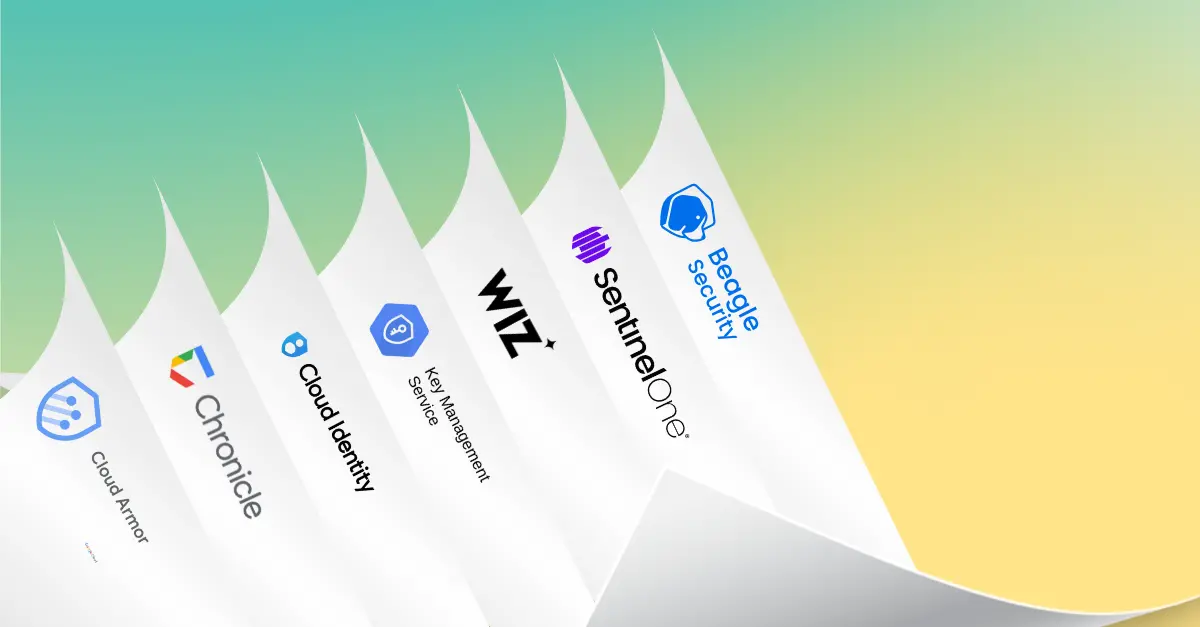
![Top AWS security tools by category [2025] Top AWS security tools by category [2025]](https://beaglesecurity.com/blog/images/top-aws-security-tools-by-category-840.webp)
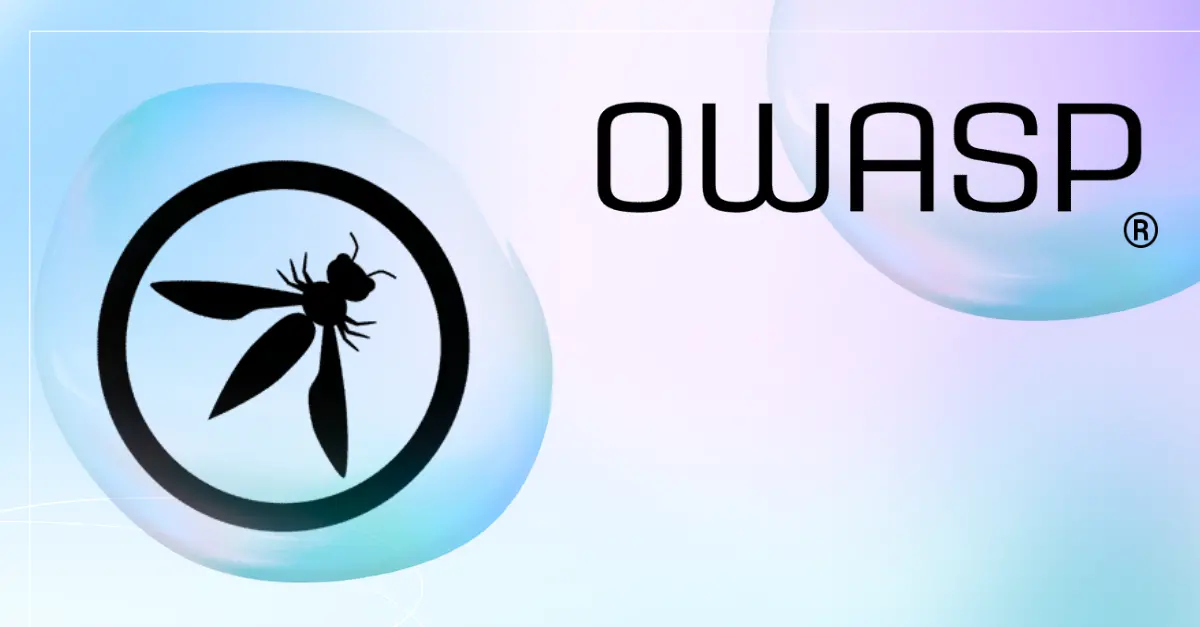
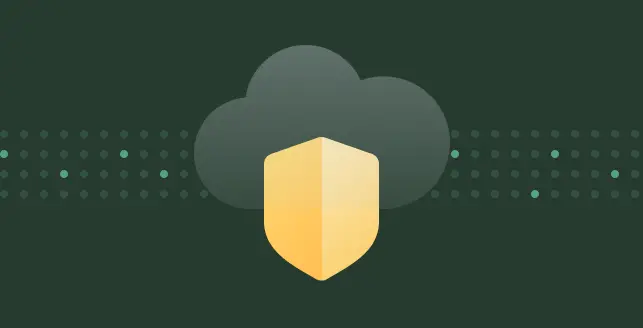
![Top AppCheck alternatives [2025] Top AppCheck alternatives [2025]](https://beaglesecurity.com/blog/images/top-appcheck-alternatives-840.webp)
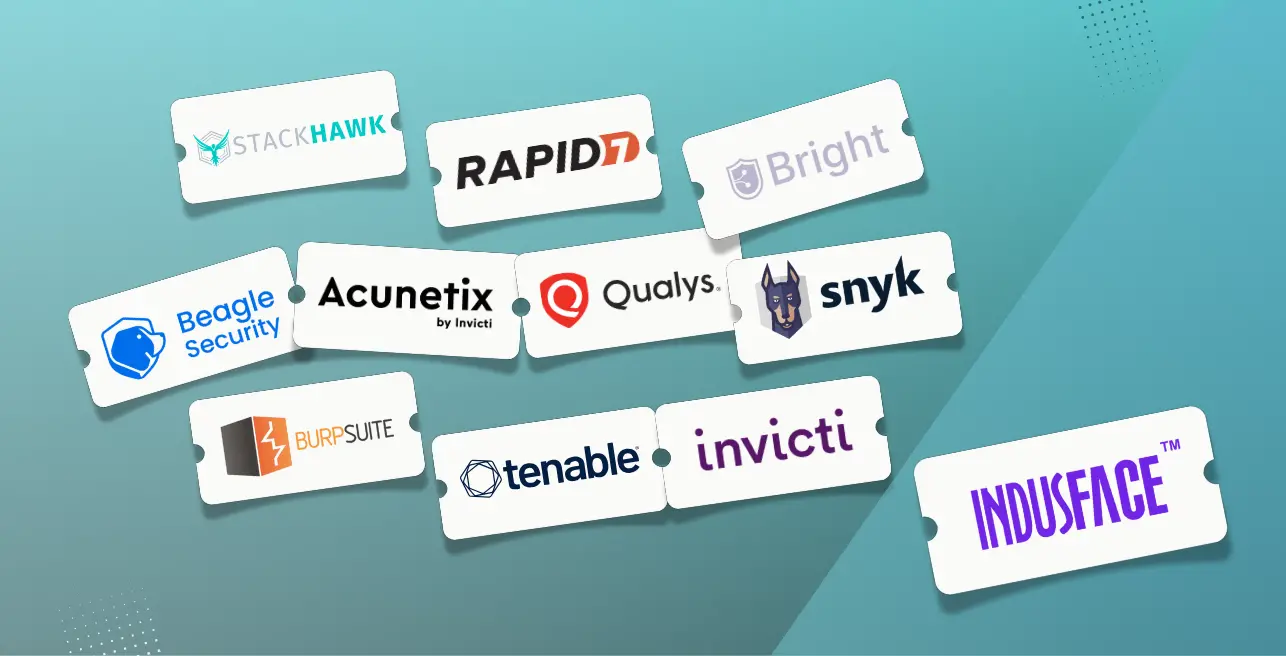
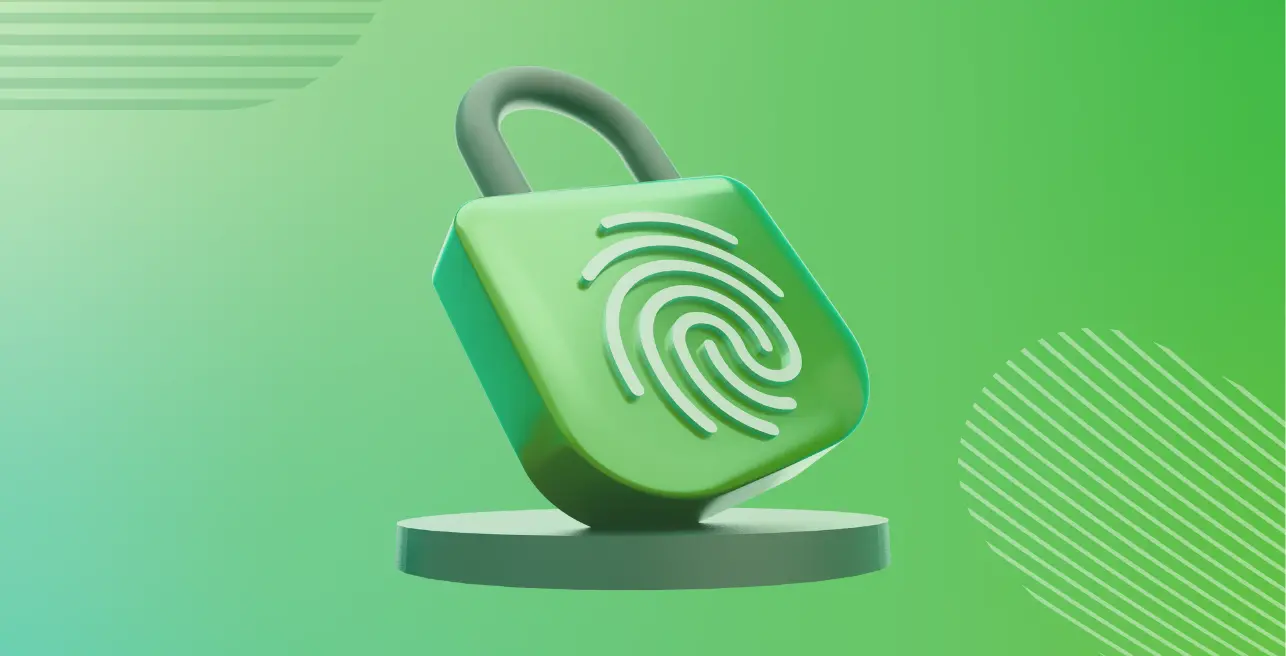
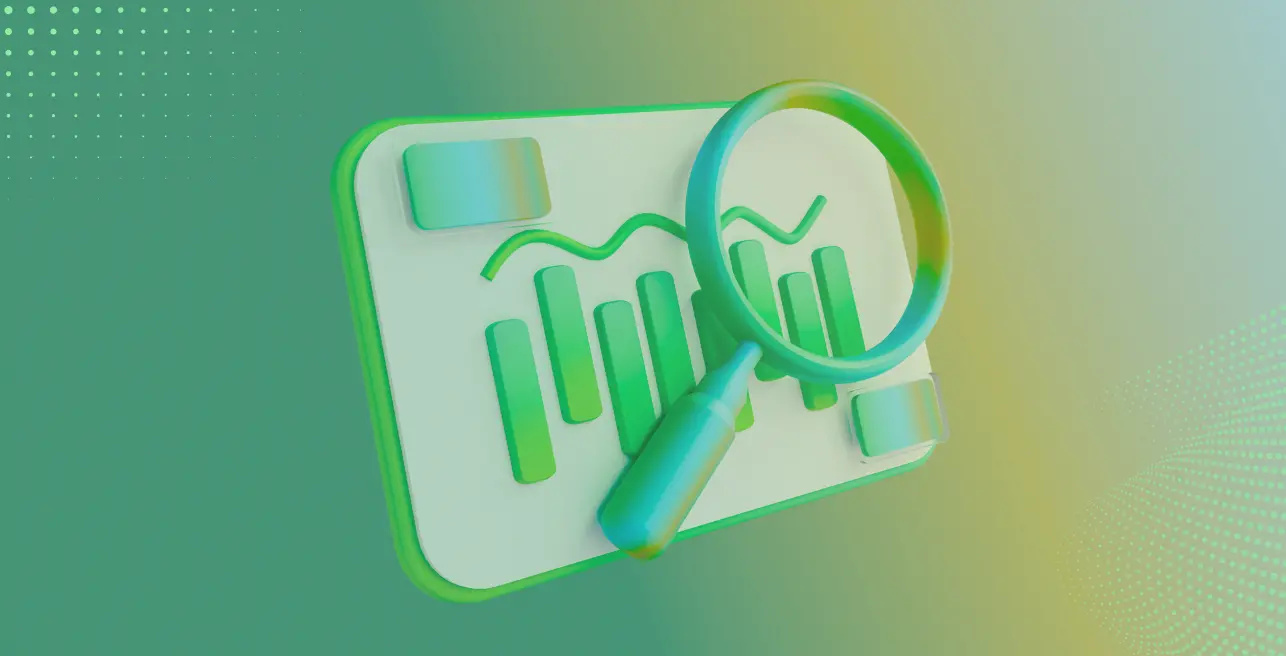
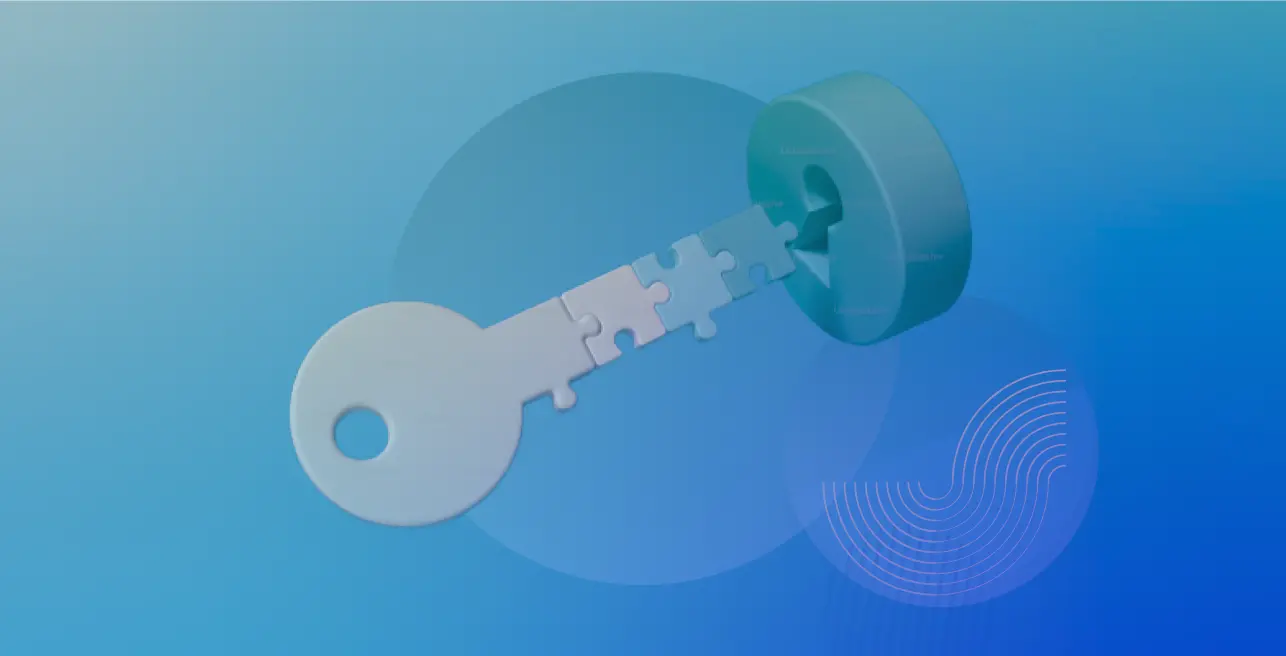
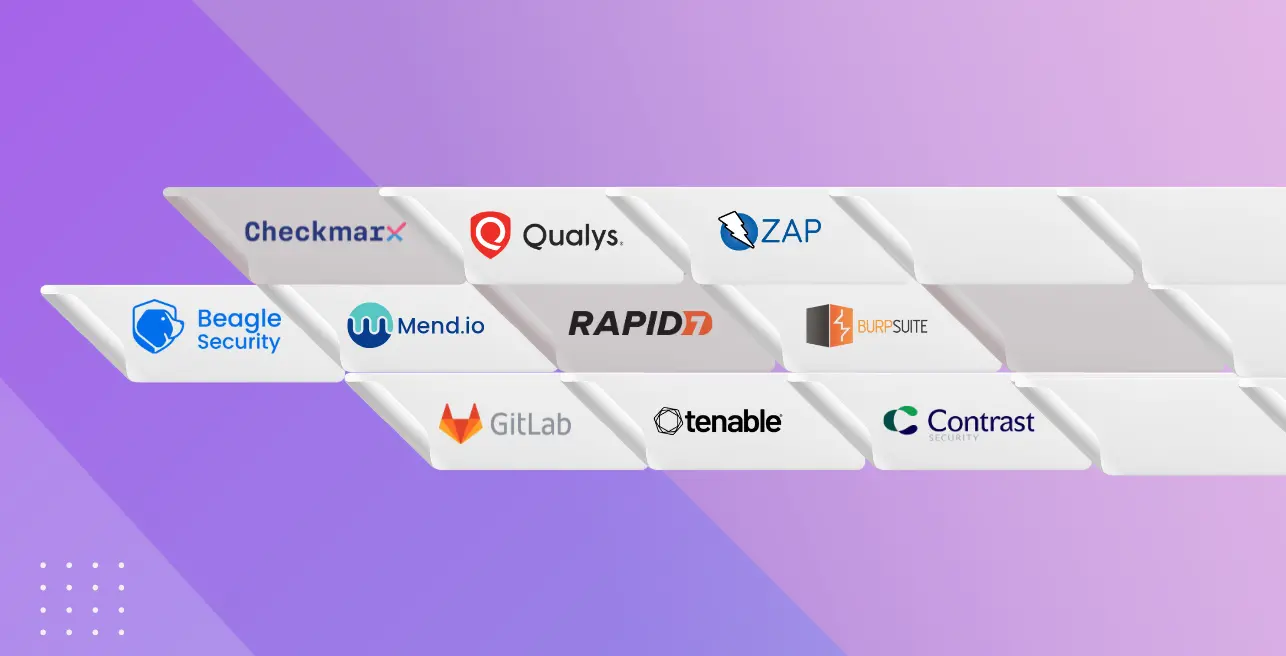
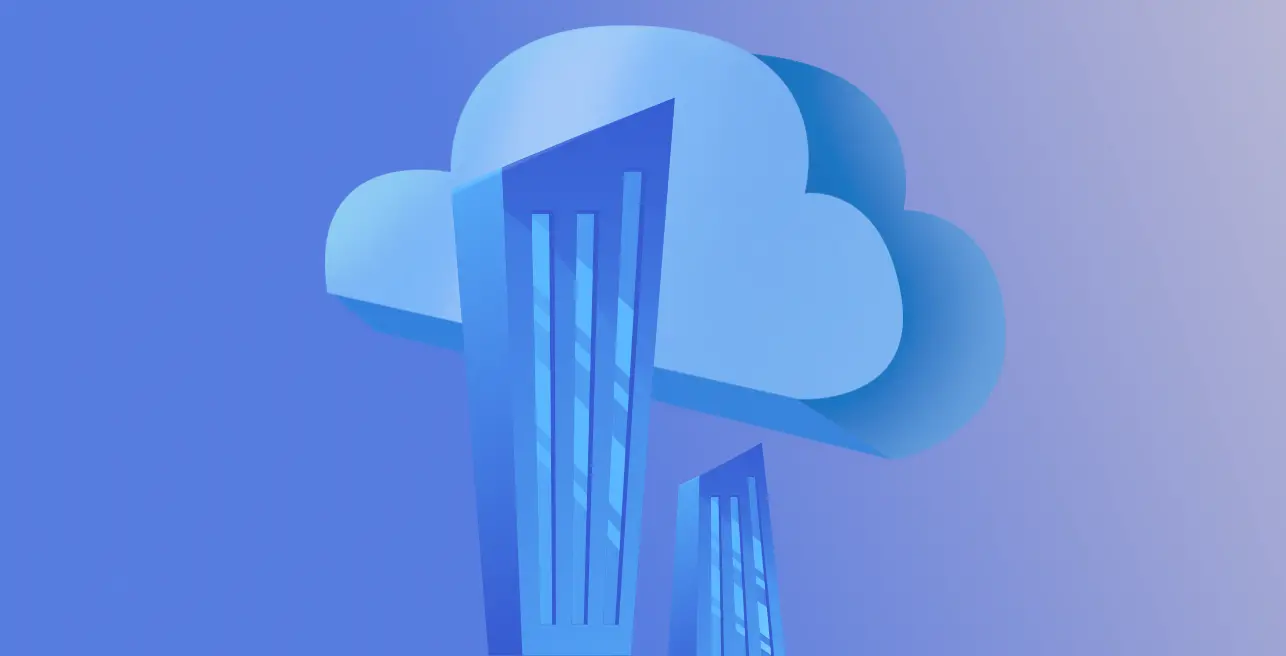
![Top cyber security companies in Canada [2025] Top cyber security companies in Canada [2025]](https://beaglesecurity.com/blog/images/top-cyber-security-companies-in-canada-840.webp)
